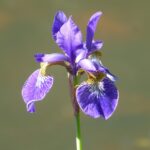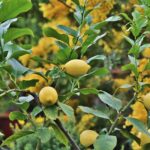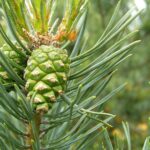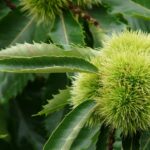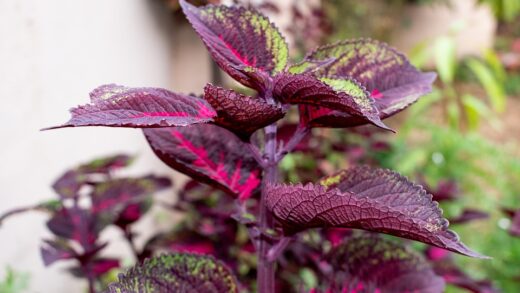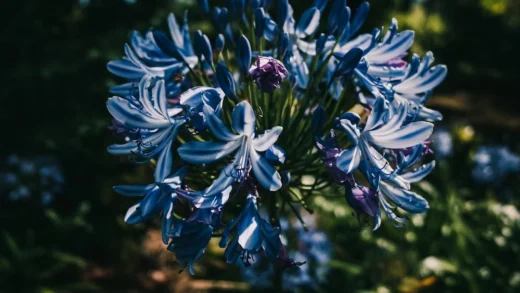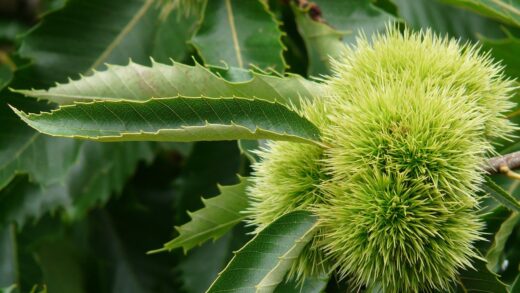Ensuring that your elecampane successfully navigates the challenges of winter is a crucial aspect of its long-term care. As a hardy herbaceous perennial, this plant has natural adaptations to survive cold temperatures, but a little assistance from the gardener can make a significant difference, particularly in colder climates or for younger plants. The process of overwintering is not a single event but a series of preparatory steps taken in the autumn to protect the plant’s dormant crown and root system. By understanding the plant’s winter dormancy cycle and providing the right kind of protection, you can ensure that it emerges in the spring with the vigor needed for another season of spectacular growth.
Elecampane is native to regions of Europe and Asia that experience cold winters, and as such, it is well-equipped to handle freezing temperatures. The plant’s survival strategy is to die back completely to the ground after the first hard frosts of autumn. All of the energy produced during the growing season is stored in its large, fleshy taproot, which lies dormant beneath the soil, waiting for the warmth of spring to signal the start of a new growth cycle. The primary goal of any overwintering strategy, therefore, is to protect this vital root system from the most extreme winter conditions, such as deep freezes, excessive moisture, and damaging freeze-thaw cycles.
The hardiness of elecampane can vary slightly, but it is generally considered reliable in zones 3 through 7. In the warmer parts of this range, the plant often requires no special winter protection at all beyond a simple autumn cleanup. However, in the colder northern zones, or in areas where snow cover is unreliable, providing a protective layer of mulch is a highly recommended insurance policy. Snow itself is an excellent insulator, but in its absence, the soil is exposed to fluctuating air temperatures, which can be stressful for the dormant roots.
The preparation for winter begins well before the first snowflake falls. It starts with ensuring the plant is healthy and strong as it enters the autumn. This means providing adequate water during any late-season dry spells and refraining from applying any nitrogen-rich fertilizers after mid-summer. Late-season fertilization can encourage a flush of tender new growth that will not have time to harden off before the frosts arrive, making the plant more susceptible to winter damage. A healthy plant with a well-stocked root system is far better prepared to endure the rigors of a long winter.
Beyond protecting the plant itself, the winter period offers a time for reflection and planning in the garden. It is an opportunity to observe the garden’s structure without the lushness of summer foliage and to consider any changes for the following year. You might note that a particular location is windier than expected or that water tends to pool in another, informing decisions about where to plant or whether an established elecampane clump might benefit from being moved or divided in the spring. This thoughtful observation is an integral part of successful long-term gardening.
More articles on this topic
Understanding winter dormancy in elecampane
Winter dormancy is a natural and essential part of the life cycle of elecampane and other herbaceous perennials from temperate climates. It is a period of rest and suspended growth, triggered by the decreasing day length and falling temperatures of autumn. During this time, the plant’s metabolic processes slow down dramatically, and all of its energy resources are consolidated and stored within the underground taproot. The visible, above-ground parts of the plant—the stems, leaves, and flowers—have completed their function for the season and are allowed to senesce and die back.
This process of dying back to the ground is a crucial survival mechanism. The tender, water-filled tissues of the leaves and stems are not equipped to withstand freezing temperatures and would be destroyed by the formation of ice crystals within their cells. By sacrificing its top growth, the plant protects its most vital part, the crown and root system, which remains insulated by the soil. The energy stored in the taproot acts as the fuel reserve that will power the initial burst of growth when spring arrives.
The transition into dormancy is a gradual process. As the days shorten in late summer and early autumn, the plant begins to shift its focus from producing foliage and flowers to transporting sugars and nutrients from the leaves down into the roots for storage. This is why you will see the foliage begin to yellow and wither naturally. It is important to allow this process to happen unimpeded, as cutting the plant back prematurely can deprive it of the opportunity to store the maximum amount of energy needed for a robust return in the spring.
Breaking dormancy in the spring is triggered by a combination of increasing soil temperatures and longer daylight hours. Once the conditions are right, the stored energy in the root is mobilized, and new buds at the crown of the plant begin to swell and produce fresh shoots. A plant that has successfully overwintered will emerge with vigor, ready to begin the cycle of growth anew. Providing proper winter protection helps to ensure that the dormant root system is not damaged, allowing this spring revival to proceed without any setbacks.
More articles on this topic
Preparing the plant for winter
The process of preparing your elecampane for its winter rest begins in the late autumn, typically after the first one or two hard frosts have caused the foliage to completely yellow and collapse. Waiting until this point is crucial, as it ensures the plant has had ample time to reabsorb all the valuable energy from its leaves and stems and store it in its roots. Cutting the plant down while the leaves are still partially green would interrupt this vital process and could result in a weaker plant the following spring.
Once the top growth has completely died back, it is time for the autumn cleanup. Using a sharp pair of pruners or shears, cut the dead stems down to about 10 to 15 centimeters above the soil line. This tidies the appearance of the garden bed and, more importantly, removes potential overwintering sites for pests and fungal diseases that could otherwise harbor in the decaying plant debris. Leaving a short stub of the stems makes it easy to locate the plant’s crown in the spring and helps to trap insulating snow or mulch around the base.
After cutting back the stems, it is very important to clear away all the removed foliage and any other plant debris from around the base of the plant. Do not leave this material on the ground over winter. This practice of good garden sanitation is a key component of disease prevention. If the foliage showed any signs of disease during the growing season, such as powdery mildew, it should be burned or disposed of in the trash rather than being added to the compost pile, where the pathogens could potentially survive and reinfect your garden the following year.
The final step in preparation, especially in colder climates, is to apply a protective layer of winter mulch. This is done after the ground has frozen lightly. Applying the mulch too early, while the ground is still warm, can provide a cozy haven for rodents like voles and mice, which may then chew on the plant’s dormant crown during the winter. Waiting for a light freeze ensures that these pests have already found other winter quarters. This well-timed preparation sets the stage for a safe and successful dormant period for your elecampane.
Mulching and protection techniques
The primary purpose of applying a winter mulch is not to keep the ground warm, but rather to keep it consistently cold and frozen. The most significant threat to a dormant perennial’s roots is not the cold itself, but the fluctuating temperatures of freeze-thaw cycles. When the ground repeatedly freezes at night and thaws during sunny winter days, it can cause the soil to heave, potentially pushing the plant’s crown and roots up out of the ground and exposing them to drying winds and frigid temperatures. A thick layer of mulch acts as an insulator, moderating the soil temperature and keeping it frozen until spring arrives for good.
The best materials for winter mulch are those that are light, airy, and do not compact into a dense, soggy mat. Good choices include shredded leaves, straw, pine needles, or marsh hay. These materials trap air, which is an excellent insulator, and they allow for some moisture and air exchange with the soil beneath. Avoid using heavy, dense materials like wet leaves or grass clippings, which can become waterlogged, hold too much moisture against the plant’s crown, and potentially promote rot over the winter.
Apply the mulch after you have cut back the plant and the ground has experienced a light freeze. Pile the chosen material loosely over the crown of the plant to a depth of 10 to 15 centimeters. The mulch should form a protective blanket over the entire root zone. This layer will not only protect against soil heaving but will also provide an extra layer of insulation against extreme cold snaps, which is particularly beneficial in regions where reliable snow cover cannot be counted on to provide this natural insulation.
In addition to mulching, consider the plant’s location. Elecampane planted in a site that is exposed to harsh winter winds may benefit from a temporary windbreak, such as a burlap screen, especially during its first winter. Well-drained soil is also a critical component of winter survival. Plants sitting in wet, soggy soil through the winter are far more likely to suffer from root rot than those in well-drained locations. Ensuring good drainage at the time of planting is one of the most important steps you can take for year-round plant health, including winter survival.
Spring revival and care
As winter begins to wane and the first signs of spring appear, it is time to think about helping your elecampane emerge from its dormancy. The timing for removing the winter mulch is important. If you remove it too early, a late, hard frost could damage the newly emerging, tender shoots. If you leave it on for too long, the thick layer can inhibit the soil from warming up and can create a damp environment that encourages slugs and rot. The best time to act is when you see the first green nubs of new growth starting to push through the soil under the mulch.
When the time is right, gently pull or rake the mulch away from the crown of the plant. You do not have to remove it from the garden bed entirely. Simply pulling it back from the immediate vicinity of the crown will allow sunlight to reach the soil and warm it up, stimulating vigorous new growth. The pulled-back mulch can be left on the surface of the surrounding soil, where it will continue to suppress weeds and will eventually break down, adding valuable organic matter to the garden.
Once the new growth is actively emerging, you can provide the plant with its first feeding of the season. This is the perfect time to apply a top-dressing of well-rotted compost or a balanced, slow-release granular fertilizer around the base of the plant. This will provide the necessary nutrients to fuel the rapid growth that is about to occur. Water the area well after applying any amendments to help them settle into the soil and become available to the plant’s waking roots.
The early spring is also a time to be vigilant for pests. Slugs and snails are particularly active in the cool, damp weather of spring and are very fond of the tender new shoots of perennials. Monitor your emerging elecampane closely and use your preferred method of slug control to protect the young growth from damage. By providing this attentive care as the plant wakes up, you are setting it on the right course for a successful and productive growing season ahead.











